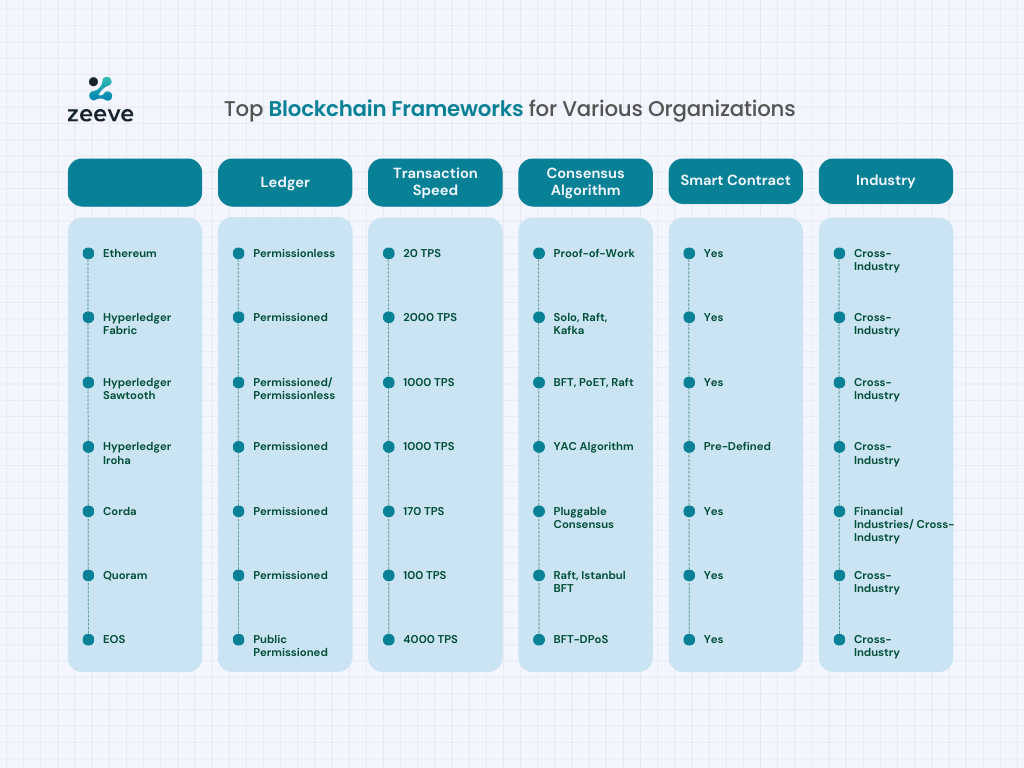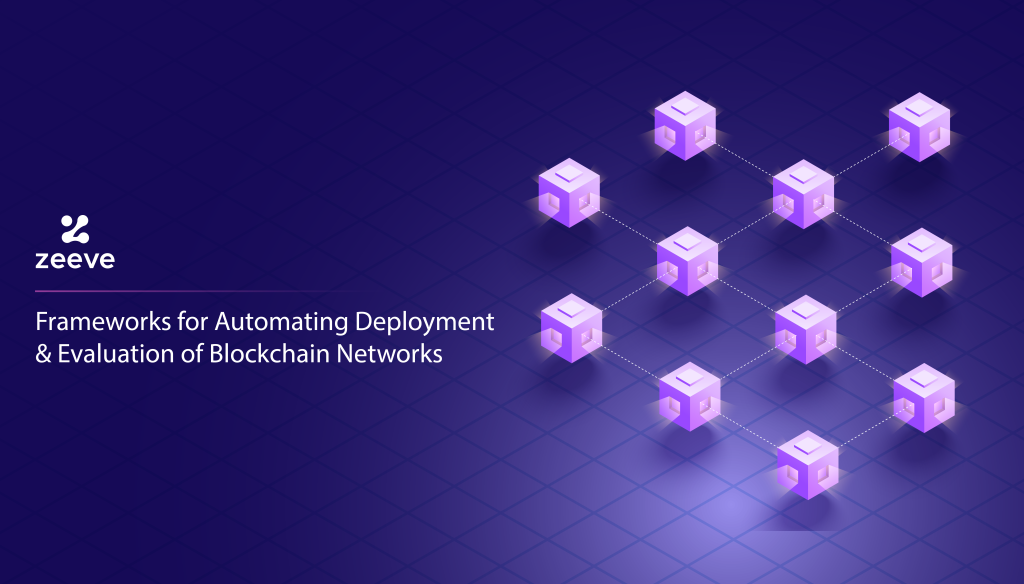The adoption of blockchain technology in recent years has changed the concept of data extraction, gathering, and communication. Although, a number of blockchain projects fail. The reason being no right resources are in place and no experts to guide them. The blockchain automation framework provides production-ready solutions that only need a dedicated expert team and the right resources. The framework helps in doing the work in a matter of days, which would have taken weeks or more.
Subsequently, a blockchain development platform not only brings resources but it also brings together expertise. As the usage of technology gains momentum, the framework acts as a guiding light. For multi-site production, traceability becomes important, and in order to keep up with the advancements in blockchain technology, a framework is needed.
If your partner organization trusts your IT system solutions, then there isn’t any need for blockchain. You can build a system and share the API access with everyone. However, if there is a need to share data across the organization, the data should be immutable. Furthermore, there is a requirement for an audit trail. In that case, a blockchain framework becomes pivotal for any organization. Out of 100, there are 81 companies that use blockchain technology, whether it is for research, pilot projects, and production.
With the usage of the framework, the development rate improves. This is possible because of the availability of basic modulus, and the developer & team has to work on a few specific components only. In this blog, we will know more about the attributes of a blockchain framework, the advantages of deploying a framework, and the types of blockchain frameworks.
Attributes of a Blockchain Framework
A blockchain framework supports multiple distributed ledger technology (DLT) and many of the cloud providers. There is a vast network size limit and it allows the heterogeneous deployment with every node managed by a distinct organization. Some of the advantages of using a framework are:
Confidentiality
Keeping data secure and private is of utmost importance for organizations. The data should be accessible, and there should be adhered to legal and regulatory requirements. The confidentiality of a blockchain framework needs to be encrypted. Thus, it can be traced but is tamper-proof and cannot be changed.
Transparency
Transparency is required for an organization to grow. The supply chain needs to be transparent but tightly safeguarded as well. In a blockchain framework, critical information must be distinguished from information that is normal.
Automation
The usage of a framework replicates the similar template across multiple organizations. Every platform has its individual architecture and requirements. The framework automates the process to some extent and minimizes the effort.
Operational Cost
The framework is beneficial as it reduces the audit trail, and the cost-sharing happens on the network. In terms of cost-sharing, large organizations can share the costs of hosting and maintaining the data.
Low Transaction Cost
The blockchain removes third parties and greatly reduces errors. Therefore, the total transaction cost on the network is also reduced. There is a further reduction in the overhead cost of the project.
Most Reliable Blockchain Frameworks for Deployment
Ethereum Framework
Ethereum is an open-source framework for dApps, the popular blockchain development platform, which also introduces the revolutionary feature called a smart contract. Ethereum serves as the perfect open-source platform for developers to design and launch their decentralized applications. A user can resolve a dispute or conduct a transaction without the assistance of a third party. The evergreen framework is perfect for large-scale adoption.
Ethereum also has a permissioned network known as Enterprise Ethereum which goes well for the functioning of enterprises.
- Widely scalable
- Easy data coordination
- Easily compatible
- Active community
Three Components of the Ethereum Framework
Smart Contracts
The smart contract gets executed itself once the set of conditions are met from both sides of the parties.
EVM
EVM, being the foundation of Ethereum, affords developers with a run-time environment to construct decentralized applications (DApps) and other programs. It further executes smart contracts.
dApps
The decentralized applications are the ones that employ the smart contracts on the frontend for operating. Similar to the ios or Android apps, it replaces the centralized server with a P2P blockchain network.
The Hyperledger Framework
Hyperledger is a permissioned framework and is an open-source enterprise blockchain. It has a modular design, due to which it has fewer verification levels and improves the performance of a network. The framework supports the Corda, Quorum, Fabric, and many more. The Hyperledger library is designed in a way to reduce the time spent on the deployment. The network is:
- Compatible with plugins
- Permissioned access
- Works on both decentralized and centralized projects
Components of Hyperledger Framework
Fabric
Hyperledger Fabric is a collaboration with IBM for large-scale blockchain applications. It works on the plug-and-play model. The contracts are also more flexible than regular smart contracts.
Sawtooth
The platform executes the consensus algorithm known as proof of elapsed time. The platform is well known for tokenizing sales and logistics.
Iroha
The blockchain platform is based on the crash fault-tolerant consensus. The distributed ledger is designed to be easily incorporated into IoT projects.
Burrow
It is a built-in virtual machine that functions on the Ethereum specifications. Due to its Tendermint proof-of-stake consensus algorithm, Burrow has a high transaction throughput and finality.
EOS
EOS blockchain framework built for public and private use cases. With role-based permissioning, industry-leading speeds, and secure application processing, the EOS is well-suited for businesses across industries. The framework provides a sub-second latency and a high rate of configurability. The EOS allows the implementation of governance and business logic along with executable smart contracts.
- Great throughput
- dApps development toolkit
- Groundbreaking Crowdfunding model
Corda
R3 Corda is a popular enterprise blockchain framework. The blockchain framework has no chain of blocks. That signifies that Corda maintains the work on a trusted non-centralized ledger. Corda allows the KYC of all participants and the core identity framework assigns a single user profile to the organization or individual. The platform is safe as there aren’t any miners. If there isn’t any mining then many of the nodes will not take part in simultaneous transactions. As a result, resources will be spent less.
The private access distribution platform operates on a novel consensus algorithm that leverages a “notarized” node to verify the contracts.
- Well-structured nodes
- Scalable
- Customizable
- Compliance friendly
Quorum
Quorum node is Geth-powered which means it is a fork of Ethereum’s ‘go-ethereum’.The permissioned network allows the companies to deploy smart contracts in a. Quorum is based on Ethereum and the network was built to address the issues in financial industries. The network is also known to support the institutional transactions. Furthermore, due to being a decentralized network the transactions are affirmed on several nodes.
Quoram’s consensus algorithm BFT or Raft does the validation. This is done when a new transaction occurs it sends the information to other nodes for verification.
- Enterprise-ready
- Community-driven
- Mature
- Open-source blockchain framework

Factors to Consider While Selecting A Blockchain Framework
Choosing a blockchain framework as per your industry’s requirement can be tricky and thus it is vital to know about a few elements which will help you in your decision:
- License: Using a framework of limited usage or whose licensing terms are incorrect can easily hinder your organization’s growth in the long run.
- Support model: When frameworks get support from large corporations, the framework is reliable, and there are high chances of seeing success into the projects.
- Ease of Use: An organization needs to understand the ease of use. As there are many employees, it’s not possible that everyone will be able to understand the framework.
- Community: An active community is a great sign of the success of the project and the adoption of the network.
Final Note
Nowadays, blockchain technology is gaining popularity among public, private, and government organizations. Furthermore, the choice of frameworks differs from one industry to another. Therefore, to bring automation along with efficiency, investing in a blockchain framework is more accommodating.
The frameworks such as Hyperledger, Ethereum, and Corda are commonly used. In addition, the developer needs to have an understanding of C++, Solidity, and Python.
Finally, it is necessary to keep in mind that the blockchain framework only handles the deployment of the blockchain components. The other peripheral components, such as the UI and API, have to be tackled by different expert teams. However, collaborating with a blockchain infrastructure platform solves a multitude of problems. Your organization gets all the services within the same infrastructure platform.
Partner With Zeeve
If you are in search of a platform that assists in deploying a blockchain framework, partnering with Zeeve would be a great option. Zeeve further decreases the hassle in deployment as now you can bring your own cloud (BYOC) and deploy a framework of your choice. This will help you to save 97% of your time, and the process will be secure and reliable.
If you would like to learn more about Zeeve, you can reach out to us on Twitter or Telegram. If you would like to go into further detail, we can arrange a call with you.






















